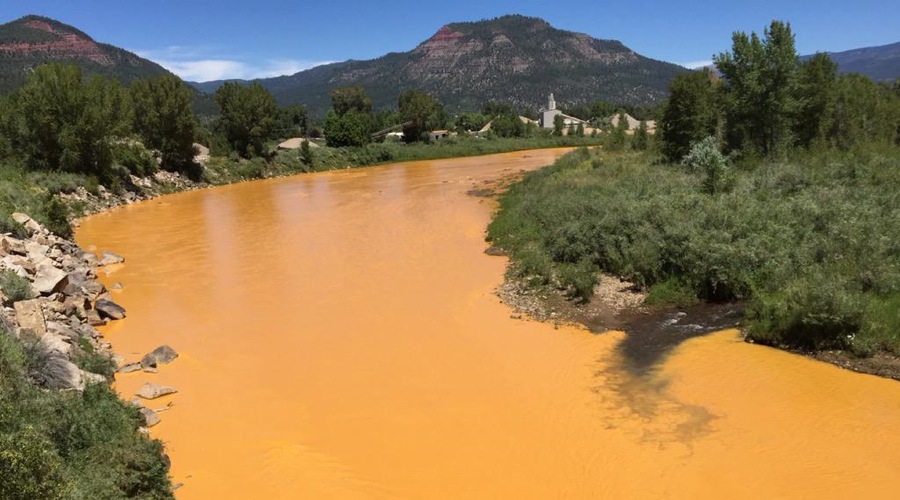
A 3 million-gallon spill from the abandoned Gold King Mine in Colorado last year is likely to have deposited more than 880,000 pounds of metals into the Animas River, the U.S. Environmental Protection Agency (EPA) said.
According to the agency’s preliminary report, some of the metals reached the San Juan River, which the Animas joins in New Mexico, but most settled into the Animas riverbed before that.
The report didn’t confirm which metals were in the waste, but researchers believe it likely contained cadmium, copper, lead, mercury, nickel and zinc. Tests done after the spill also found arsenic and lead in the wastewater.
EPA didn’t unveil which metals were in the waste, but researchers believe it likely contained cadmium, copper, lead, mercury, nickel and zinc.
Last month, New Mexico took a first step to sue EPA over the spill. Officials have yet to tally the total damage from the accident, but they accuse EPA of repeatedly failing to protect the state and its residents.
The state is also suing Colorado and the owner of the abandoned mine for their roles in the spill, which happened as an EPA clean-up crew was working at the abandoned Gold King mine.
New Mexico’s imminent lawsuit is believed to be the first formal intention to sue the EPA over the accident.
An earlier probe conducted by the US Department of the Interior concluded the spill, while avoidable, was “clearly unintentional.”
The agency has said it does not expect any negative health effects from exposure to the water and that the risk of adverse impacts to livestock is low. EPA has also said that it has not uncovered any food-safety concerns related to agricultural contamination.
5 Comments
Andy Whitten
Oh my,
“An earlier probe conducted by the US Department of the Interior concluded the spill, while avoidable, was “clearly unintentional.”
The agency has said it does not expect any negative health effects from exposure to the water and that the risk of adverse impacts to livestock is low. EPA has also said that it has not uncovered any food-safety concerns related to agricultural contamination.”
They are probably right on minimal serious impacts; however, the irony is in how different these agency quotations would have read had the responsible party been a private company. On top of the EPA-assessment and EPA managed cleanup costs charged to a private company, think of the fines and the rhetoric that would be spewed in the EPA press release about a company being irresponsible, not showing proper care, irreparable damage; the need for agency action, proportionate penalties, ad nauseum.
wags1
The math just doesn’t add up. Let’s see; 880,000 pounds of metal contained in 3,000,000 gallons of water.
That’s 0.2933 pounds of metals per gallon of water, or put another way, nearly five ounces of metals per gallon. I don’t believe it.
SanPas
Believe it. You’re thinking of solid metal, and not in ionic solution. Have you ever ingested a barium or iodine contrast for imaging? Didn’t it seem heavier the just water? Such metals are high on the periodic table, and far more dense than water.
Consider this exercise: at saturation lead nitrate goes to 375 g / liter or around 3 lbs. per 8 lbs of pure water. that’s like 10x your computed number.
Madbull
Let us mine it.
SanPas
It is time to move on to the penalty phase. EPA was no more to blame than the engineer who collapsed a dam when he stepped on a loose stone causing a chain reaction to release storm waters toward Johnsonville, PA.
There were corrupt state officials, a landowner who must be imprisoned, and the public execution of the senior state official convicted of corruption. And, their families must suffer the costs … in work camps, if necessary. There must be consequences so society understands their responsibility to government v.v. the people.